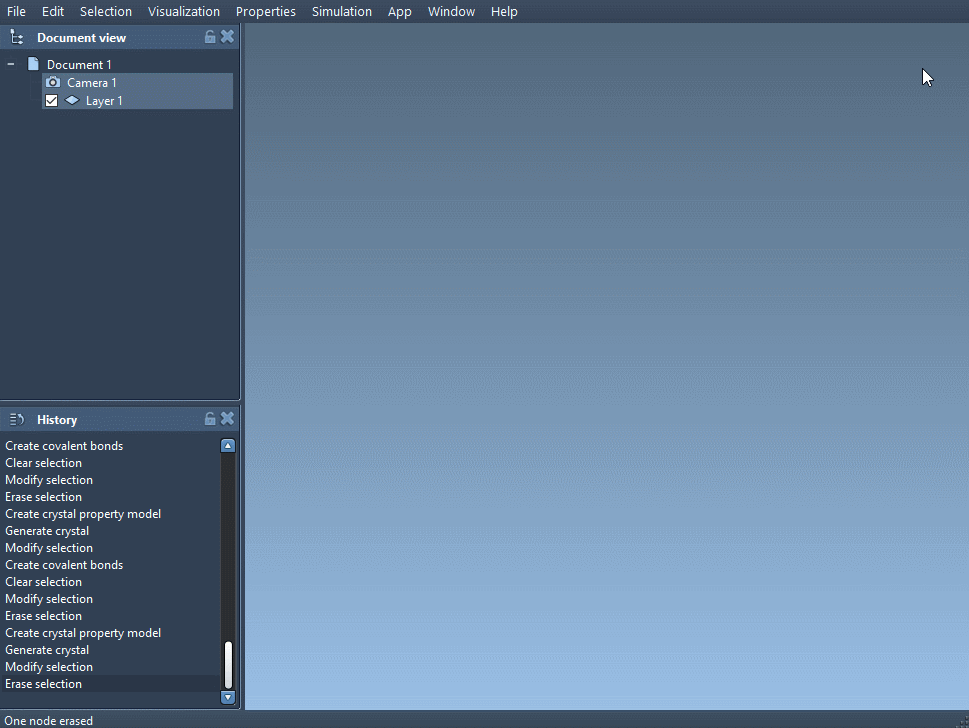For molecular and materials modelers, reproducing realistic structural behaviors of crystals is essential for accurate simulations. One recurrent challenge is incorporating and visualizing point defects—like vacancies or substitutions—into periodic crystal models. These small changes can drastically affect the physical and electronic properties of materials. But how can you represent these incomplete structures faithfully?
This blog post walks through how to use the Crystal Creator Extension in SAMSON to introduce and analyze point defects in a diamond crystal. Even if you’re new to SAMSON, you’ll find this workflow intuitive and practical.
1. Start With a Clean Crystal
Download a diamond CIF file from trusted databases such as:
Open this CIF file in SAMSON using the Crystal Creator App. Upon loading, the app lets you adjust the number of unit cells, display symmetries, and view atomic meshes. Click on Open to see the atomic structure and its corresponding property model.

2. Add Defects Manually to the CIF File
To simulate a defect, open the CIF file in a text editor. Normally, atoms are listed like this:
|
1 2 3 4 5 6 |
loop_ _atom_site_label _atom_site_fract_x _atom_site_fract_y _atom_site_fract_z C 0.00000 0.00000 0.00000 |
Modify it to include an occupancy parameter that defines the probability of presence for each atom. For example:
|
1 2 3 4 5 6 7 |
loop_ _atom_site_label _atom_site_fract_x _atom_site_fract_y _atom_site_fract_z _atom_site_occupancy C 0.00000 0.00000 0.00000 0.95 |
This means the carbon atom has a 95% chance of occupying that site, introducing statistical vacancies into the structure. You can apply this line for selected atoms to create vacancy patterns in the lattice.
3. Load the Defective Crystal in SAMSON
Re-load the modified CIF into SAMSON. The Crystal Creator App will interpret your occupancy settings and automatically include random defects based on the given probabilities. You can now see how the structure deviates from the perfect diamond crystal.
Use the “Check atoms ratio” feature in the App’s second tabication to evaluate whether the generated model reflects the specified ratios accurately.
4. Add Bonds and Perform Minimization
Once the defective structure is loaded, generate the atomic bonds in SAMSON. Then, run structural minimization using the Brenner potential. This helps illustrate how the system relaxes in the presence of vacancies.
5. Visual Inspection and Analysis
By comparing the minimized structures of the perfect and defective crystals, you can directly observe lattice distortions caused by the absence of atoms. This visual insight can support many student projects, research investigations, or teaching demonstrations.
This hands-on approach is especially helpful when exploring the real behavior of materials under non-ideal conditions. Whether you’re studying electronic structures, thermal properties, or mechanical resilience, including defect modeling in your workflow is a valuable asset.
Learn more about this workflow and other crystal modeling tools in the Crystal Creator documentation.
SAMSON and all SAMSON Extensions are free for non-commercial use. Download SAMSON at www.samson-connect.net.





